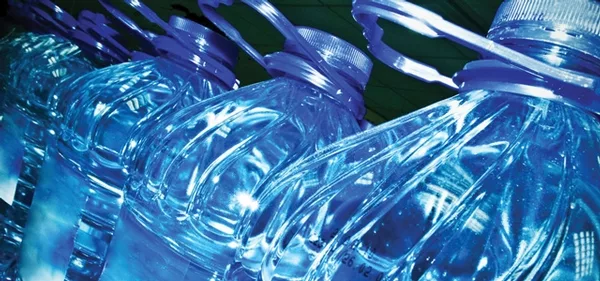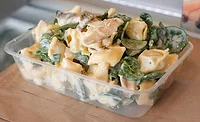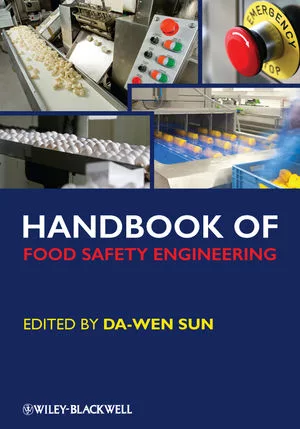Polyethylene Terephthalate: The Safety of Bottled Water

Bottled water’s popularity is at an all-time high–the category is expected to outsell soda by the end of 2016–yet anticorporate adversaries are persistent in their push to create confusion, using online content generators and social media, about the safety of this popular, healthful and convenient consumer product.
Most people consider bottled water to be a safe and healthy alternative to other packaged beverages. And recent polling indicates a vast majority of consumers believe access to safe drinking water in the form of bottled water is important. Confusion about facts can arise when, for example, a friend makes a social media post that is counter to what you know to be true about a product you enjoy. Just Google “bottled water” and “facts” and you’ll see what we mean–a litany of false and misleading reasons to stop drinking the product. The most frequent topic raised is the fallacy that bottled water is not safe. This argument, unsupported by facts, raises alarm by citing flawed studies that make claims about contaminants, questionable water sources and polyethylene terephthalate (PET) packaging leaching chemicals. People spread this scaremongering news without giving it much thought. However, if you take the time to look into these claims, you discover that they just don’t add up. Below are common questions that bottled water manufacturers regularly answer to help reassure customers of the safety of their products.
Is bottled water safer than tap water?
Yes, it certainly can be and here is why: Both tap water and bottled water are federally regulated. Bottled water is comprehensively regulated by the U.S. Food and Drug Administration (FDA). By federal law, FDA regulations governing the safety and quality of bottled water must be at least as stringent as U.S. Environmental Protection Agency (EPA) standards for tap water. And in some very important cases, bottled water regulations are substantially more stringent. When compared directly with each other, bottled water provides consumers with a far safer and reliable source of hydration. A Drinking Water Research Foundation (DWRF) study[1] examined and compared the microbial health risks of tap water and bottled water, specifically examining differences in quality monitoring, regulatory standards violations, advisories and distribution system conditions. This study found that as a consequence of the differences in regulations, distribution systems, operating (manufacturing) practices and microbial standards of quality, public drinking water supplies present a substantially higher human risk than do bottled waters for illness due to waterborne organisms. In fact, the U.S. Centers for Disease Control and Prevention directly attributes 19.5 million annual cases of acute gastroenteritis (vomiting and diarrhea) to tap water. Meanwhile, bottled water, which is factory-tested and sealed for safety, has been blamed for just five illnesses in the past 10 years. On a gallon-for-gallon basis, bottled water is tested up to 30 times more frequently than tap water. Another difference is that tap water test results can be averaged over an entire year and still meet EPA standards, whereas every single bottled water result must meet FDA guidelines. The DWRF study also shows a side-by-side comparison of FDA bottled water regulations and EPA tap water regulations to help people better understand how the two are regulated.
Does bottled water contain contaminants?
Bottled water opponents have mischaracterized substances found in bottled water as “contaminants” or “pollutants;” however, this is not the case. For example, fluoride has sometimes been described as a toxic pollutant. In fact, fluoride can prevent tooth decay; the American Dental Association has stated that “More than 70 years of scientific research has consistently shown that an optimal level of fluoride in community water is safe and effective in preventing tooth decay by at least 25 percent in both children and adults.”[2] The levels of added fluoride found in some bottled water brands are in compliance with applicable FDA standards, which the agency updated in 2015, setting the new limit for added fluoride at a maximum of 0.7 mg/L. Another example is heterotrophic plate count (HPC) bacteria, which unscrupulous blog writers rarely fact-check. HPC bacteria are naturally occurring microbes, which are found in a wide array of food products including bottled water. Most bacteria are not harmful, and HPC organisms serve to prevent the growth of opportunistic pathogens because they have the strength to help overcome harmful bacteria and pathogens that may pose a health threat. In the absence of pathogen indicators, such as Escherichia coli, HPC organisms are also considered to be nonpathogenic. There has never been a documented illness associated with HPC bacteria. Neither EPA nor FDA believes there is a health risk associated with background flora in drinking water, including bottled water, and neither agency has set a standard for the amount in drinking water. And another common mistake is to label “total dissolved solids” as “pollutants.” Total dissolved solids, composed of dissolved minerals in water, are important for the taste and character of all waters, including spring water and artesian water, and in the case of mineral water, FDA has set a minimum level of 250 parts per million for these products.
Isn’t most bottled water just tap water in a bottle?
Many different types of water are used for bottling: artesian, mineral, sparkling, spring and purified. FDA has strict guidelines for identifying and handling each type of water. Purified water is typically sourced from municipal water systems and is not just tap water in a bottle. Once this water enters the bottled water plant, several processes are employed to ensure that it meets FDA’s purified water standard. These treatments may include one or more of the following: reverse osmosis, distillation, microfiltration, carbon filtration, ozonation and ultraviolet (UV) light. The finished water product is then bottled under sanitary conditions and sold to the consumer. Many bottled water drinkers say they prefer a certain type of bottled water because of the taste. Bottled water brands are required to show on their on labels what type of water is used.
Does the PET plastic packaging leach chemicals into the water?
Single-serve bottled water containers are packaged in PET plastic. There are no chemical phthalates or bisphenol A (BPA) in PET plastic, and therefore PET plastic does not leach these substances. PET plastic is approved as safe for food and beverage contact by FDA and similar regulatory agencies throughout the world, and has been for more than 30 years. PET plastic is used in a variety of packaging for many foods, including everything from peanut butter, soft drinks and juices to beer, wine and spirits. Although BPA is not a chemical component of PET, the consensus among international regulatory agencies is that BPA is safe, and regulatory agencies in several countries and FDA have ruled favorably on the safety of BPA.
What about when the bottles are exposed to high or freezing temperatures?
It’s important to understand that single-serve PET plastic bottles do not contain compounds capable of producing dangerous substances under conditions of normal use, including being subjected to hot cars or placed in a freezer. The Johns Hopkins Bloomberg School of Public Health has weighed in on the issue of freezing bottled water. Its website states: “This is an urban legend. Freezing actually works against the release of chemicals…[freezing] would limit chemical release if there were dioxins in plastic, and we don’t think there are.”[3]
Does bottled water cause cavities?
People have many sources of fluoride, and the amount of fluoride exposure varies greatly by community and individual. Approximately two-thirds of communities in the United States fluoridate their public drinking water supplies. Those who live in communities that do not fluoridate public drinking water, who get their drinking water from wells or who filter their fluoridated tap water will not be getting fluoride in their drinking water. Fluoride is present in many foods and beverages, and almost all toothpaste contains fluoride. Too much exposure to fluoride can lead to a condition called fluorosis, which results in stains to the teeth. Consumers should therefore look at how much fluoride they are receiving as part of an overall diet and should contact their healthcare or dental-care provider for their recommendation. For those who want fluoride in their drinking water and wish to choose bottled water, the International Bottled Water Association (IBWA) has about 20 member companies that make clearly labeled, fluoridated, bottled water products under stringent FDA guidelines. For a complete list of these brands, which are available in many markets across the country, please visit the IBWA’s website for more information.[4]
Can restricted access to bottled water affect my health and safety?
Research shows that when bottled water is not available, people choose other packaged beverages, which may contain sugar, caffeine and other additives. A new study, published in the American Journal of Public Health in July 2015,5 concluded that the bottled water sales ban at the University of Vermont resulted in a significant increase (25%) in the consumption of sugary drinks and an increase (8.5%) in the amount of plastic bottles entering the waste stream. The data showed that per capita shipments of bottles, calories, sugars and added sugars increased significantly when bottled water was removed. Shipments of healthy beverages declined significantly, whereas shipments of less-healthy beverages increased significantly. As bottled water sales dropped to zero, sales of sugar-free beverages and sugar-sweetened beverages increased. The purpose of the bottled water sales ban was to encourage students to carry reusable water bottles that could be filled with tap water. That did not happen. The study found that the increase in sugar-sweetened beverage consumption occurred even with the university’s efforts to encourage water fountain use—retrofitting 68 water fountains so that reusable water bottles could be used, introducing educational campaigns to inform consumers about the change and handing out free, reusable water bottles at campus events. This outcome is especially important to highlight since the National Park Service (NPS) has been allowing individual parks to ban the sale of bottled water but not other less-healthy drinks also packaged in plastic–soft drinks, sports drinks, juice drinks and other sugary packaged beverages. IBWA opposes this policy because it denies park visitors the simple option of buying the healthiest packaged drink on the shelf, while at the same time making readily available a broad selection of unhealthy drinks packaged in heavier plastic bottles, which use more water to make. The NPS bottled water sales ban has the potential to undermine efforts to encourage healthy food and beverage choices.
Are bottled water companies using up all of our water?
Bottled water companies support comprehensive water resource management that regulates both the quality and quantity of groundwater, treats all users equitably, provides for the sustainability of the resource and balances the interests and rights of those using this natural resource today and in the future. Environmental stewardship is part of the bottled water industry’s history, and protecting, maintaining and preserving water resources for future generations is taken very seriously. Even though the bottled water industry’s water footprint is a small one relative to overall groundwater withdrawals–the entire United States bottled water industry accounts for less than 0.011 percent of the total ground- or surface water used each year–it continues to focus on improving efficiencies.
If bottled water is so healthy, why isn’t it on the USDA’s “MyPlate” guide?
That’s a good question. The bottled water industry is actively pushing for the addition of water on the U.S. Department of Agriculture (USDA)’s MyPlate graphic. Water, including bottled water, helps people pursue a healthy lifestyle and avoid sugar-sweetened beverage consumption. Water plays a vital role in supporting nutritional health; since 47 percent of added sugars in our diets, and 20 percent of our daily caloric intake, come from beverages, it is clear that Americans need guidance on how to be more aware of what they drink and to reduce their calorie consumption from beverages.
The U.S. is an on-the-go society, and 70 percent of what people drink comes in a package. Research shows that when bottled water isn’t available, many consumers will instead choose a sweetened beverage. Beverage choice often depends on convenience, and therefore consumption of free water is not always a practical choice for consumers. In cases where free tap water is not available, consumers should be encouraged to reach for bottled water instead of less-healthy packaged beverages. The IBWA is recommending enhanced messaging on water consumption in future dietary guidelines, including language that promotes drinking water in all forms. In addition, related information and documents, such as MyPlate, should also promote water consumption.
How much of what we read about the safety of plastic bottled water containers is factual or just a modern-day urban myth?
A large percentage of bottled water is packaged in plastic containers, which includes those made from PET, polycarbonate and high-density polyethylene. Although aluminum cans and glass containers remain popular, most single-serve beverages, including bottled water, sold in the U.S. today are bottled in 100 percent recyclable PET plastic. (Aluminum cans are the multipack leader.) Plastic is popular for beverage containers because it is lightweight, strong and extensively tested for safety; it has been around for more than 100 years and has revolutionized the way we live.
The scientific testing of all plastic containers looks at two specific aspects: establishing that there is a minimal amount of transfer of substance between plastic food packaging and its contents, and establishing that any substances that may transfer from the plastic to the food do not pose a risk to human health.
How does one verify safe packaging?
FDA carefully reviews all packaging substances that come into contact with food and beverages. As part of its review, FDA assesses the migration or potential migration of plastics and substances within plastic into the liquid contents. FDA has found that the levels of migration to food of the substances in plastics are well within the margin of safety based on information available to the agency (i.e., toxicological testing has demonstrated that the cumulative dietary concentrations of these migrants resulting from the use of the plastic materials in food packaging is at least 100- to 1,000-fold lower than the level at which no toxic effect was observed in animal studies). This means no short- or long-term health effects are likely to occur, even from lifelong, daily dietary exposure to these substances migrating from plastic food contact materials.
What is the safety record of polycarbonate plastics?
Media stories have raised questions about the safety of polycarbonate plastic bottles due to the presence of a substance known as BPA. Polycarbonate plastic is used in a wide variety of consumer products, including food and drink containers. Many 3- and 5-gallon bottled water containers are made of polycarbonate plastic, and consumers can remain confident about the safety of these products.
Polycarbonate plastic has been the material of choice for food and beverage product containers for nearly 50 years because it is lightweight, highly shatter-resistant and transparent. During that time, many studies have been conducted to assess the potential for trace levels of BPA to migrate from polycarbonate bottles into foods or beverages. The conclusions from those studies and comprehensive safety evaluations by government bodies worldwide are that polycarbonate bottles are safe for consumer use.
What is FDA’s stance on BPA?
On December 5, 2014, FDA updated its BPA Perspective web page to state that: “FDA’s current perspective, based on its most recent safety assessment, is that BPA is safe at the current levels occurring in foods. Based on FDA’s ongoing safety review of scientific evidence, the available information continues to support the safety of BPA for the currently approved uses in food containers and packaging.”[6]
Do plastic water bottles have a “shelf life?”
Container producers and bottlers continually conduct shelf tests of finished products over varying periods and under various conditions to help ensure the safety and integrity of the package and its contents. Bottled water is considered a shelf-stable product, and there is no information linking safety concerns with bottled water sold up to 2 years after bottling. Some large retailers require all food suppliers (including manufacturers of bottled water and other beverages) to carry a 2-year expiration date. Production-date coding is popular with retailers for stock-rotation purposes.
FDA, which regulates bottled water as a packaged food product, has not established a shelf life for bottled water. IBWA advises consumers to store bottled water (and all other beverages in plastic containers) at room temperature (or cooler), out of direct sunlight and away from solvents and chemicals such as gasoline, paint thinner, household cleaners and dry-cleaning chemicals. In terms of storage and handling, consumers should treat bottled water with the same care and respect as other packaged foods and beverages.
What happens to plastic food containers that are stored in sunlight?
Plastic food containers, including those used for bottled water, do not include additives to prevent the effects of UV light. Those effects may be seen in products such as plastic outdoor furniture, which when left outdoors in the sun may eventually turn color or become brittle. Many plastics used outdoors may contain additives (so-called UV stabilizers) to at least slow down this process, but plastic beverage bottles do not contain such additives, and, as a result, the plastic may become weakened and develop leaks over time. The guidance on direct sunlight is based on general properties of plastics rather than anything specific to the package contents.
What conclusions can be drawn from these facts?
Misleading statements about plastic containers are all too commonly repeated, not only on the Internet but also within our communities. But with all these facts in hand, beverage and food manufacturers are better equipped to deal with their customers’ concerns and can confidently reassure them that plastic is a safe food contact material that has been thoroughly and exhaustively investigated by FDA and several international organizations.
Jill Culora is a freelance writer, specializing in health, science and consumer news, and is a media consultant to the International Bottled Water Association.
References
1. www.thefactsaboutwater.org/uploads/CSA%20FINAL%20103015.pdf.
2. www.ada.org/en/public-programs/advocating-for-the-public/fluoride-and-fluoridation.
3. www.jhsph.edu/news/stories/2004/halden-dioxins-two.html.
4. www.bottledwater.org/.
5. ajph.aphapublications.org/doi/abs/10.2105/AJPH.2015.302593?journalCode=ajph.
6. www.fda.gov/food/ingredientspackaginglabeling/foodadditivesingredients/ucm064437.htm.
Looking for quick answers on food safety topics?
Try Ask FSM, our new smart AI search tool.
Ask FSM →








